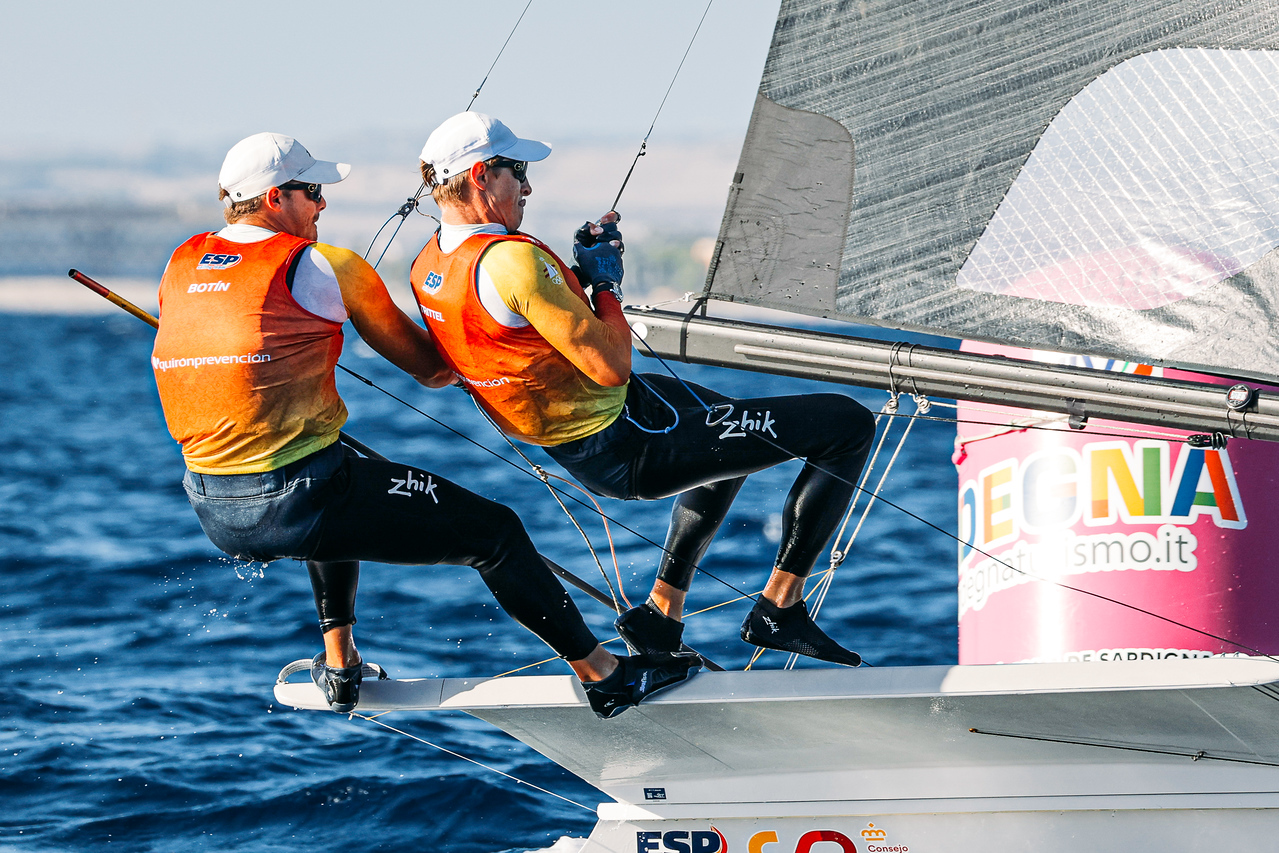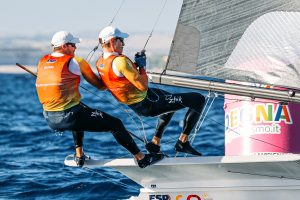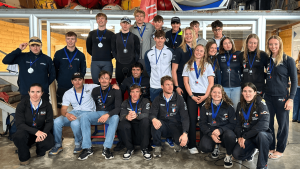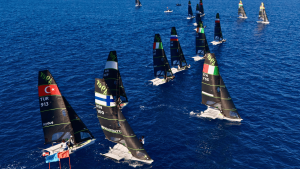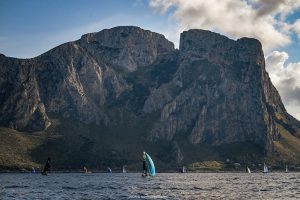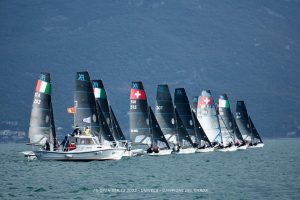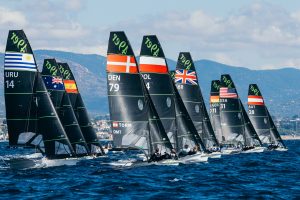The 49er class has long been the world’s most reliable training ground for elite sailors — the skiff where Olympic champions, SailGP helms, and America’s Cup talent are forged. The opening day of the 2025 49er World Championship in Cagliari has once again proven that success in this class isn’t random luck. It follows a clear and repeatable pattern: master the Junior Worlds, rise through the 49er ranks, win Olympic gold, and then command the world’s fastest professional boats.
Six of the Top Eight from Day 1 of the Worlds Are Junior World Champions
Look no further than the Worlds Day 1 leaderboard. After the first three qualifying races, Diego Botin and Florian Trittel-Paul — the reigning Olympic champions from Spain — lead the standings. Botin was 49er Youth World Champion in 2013, and Florian was 29er Youth Sailing World Champion in 2011 and 2012, they’ve followed the exact arc that every aspiring sailor now recognizes: junior title, senior title, Olympic gold, SailGP victory.
In second place sit Erwann Fischer and Clément Pequin of France — Fischer, a former Junior World Champion in 2016, went on to win the 2024 49er Worlds. Third are Marius Westerlind and Olle Aronsson of Sweden, one of the few top crews without a junior title yet showing the same rising trajectory.
Behind them, Bart Lambriex and Floris van de Werken — triple World Champions from the Netherlands — show how sustained excellence at the senior level still traces back to early exposure in the 49er. Fifth-place Richard Schultheis and Fabian Rieger (GER 11), Richard was Junior World Champions in 2024.
Sixth are Isaac McHardie and William McKenzie (NZL 18), Junior World Champions in 2019 and silver medalists at the Paris 2024 Olympics. Seventh, Jack Ferguson and Jack Hildebrand (AUS 61) — Junior World Champions in 2023. Eighth, Mikolaj Staniul and Jakub Sztorch (POL 64), who won back-to-back Junior World titles in 2021 and 2022.
That’s six of the top eight after day 1 at the Worlds who were once Junior World Champions — proof that the pathway is not anecdotal but systemic.
From Junior Titles to Professional Dominance
This pattern has already played out for an entire generation. Nathan Outteridge, Peter Burling, Dylan Fletcher, and Diego Botin all followed nearly identical progressions from youth skiff classes to Olympic gold to professional sailing’s highest platforms — SailGP and the America’s Cup.
The 49er fleet has effectively become a finishing school for the sport’s elite. Each sailor who masters the balance, speed, and precision of the 49er learns the same language spoken at the top of professional sailing: fast foils, aggressive tactics, and data-driven performance.
Every Nation Has the Same Map
What the standings reveal is that the roadmap is open and accessible. Any nation can reproduce it. The formula is simple: invest early in 29er and 49er programs, connect young sailors to international racing circuits, and keep them in high-performance skiffs through their twenties.
The nations that dominate today — Spain, France, New Zealand, Germany, Poland, Australia, the Netherlands — have all done precisely that. Each has used the Junior World Championship as a development milestone, not a destination.
A Clear Course Ahead
If the opening day of the 2025 49er World Championship proves anything, it’s that the path to sailing greatness isn’t mysterious — it’s methodical. Nations that commit to the junior-to-senior skiff pipeline keep producing champions who go on to rule the sport’s professional stages.
The 49er is more than a class — it’s a career map. And right now, the map is working perfectly.
“The System Works If You Sail Fast Early”
As one coach put it during the Worlds, the formula is simple but unforgiving: “The system works if you sail fast early.” Those who learn to race skiffs young develop instincts that can’t be taught later. Every tack, every start line, every puff counts — and that experience compounds.
The evidence is written across today’s leaderboard. The sailors who started early are still the ones out front.

